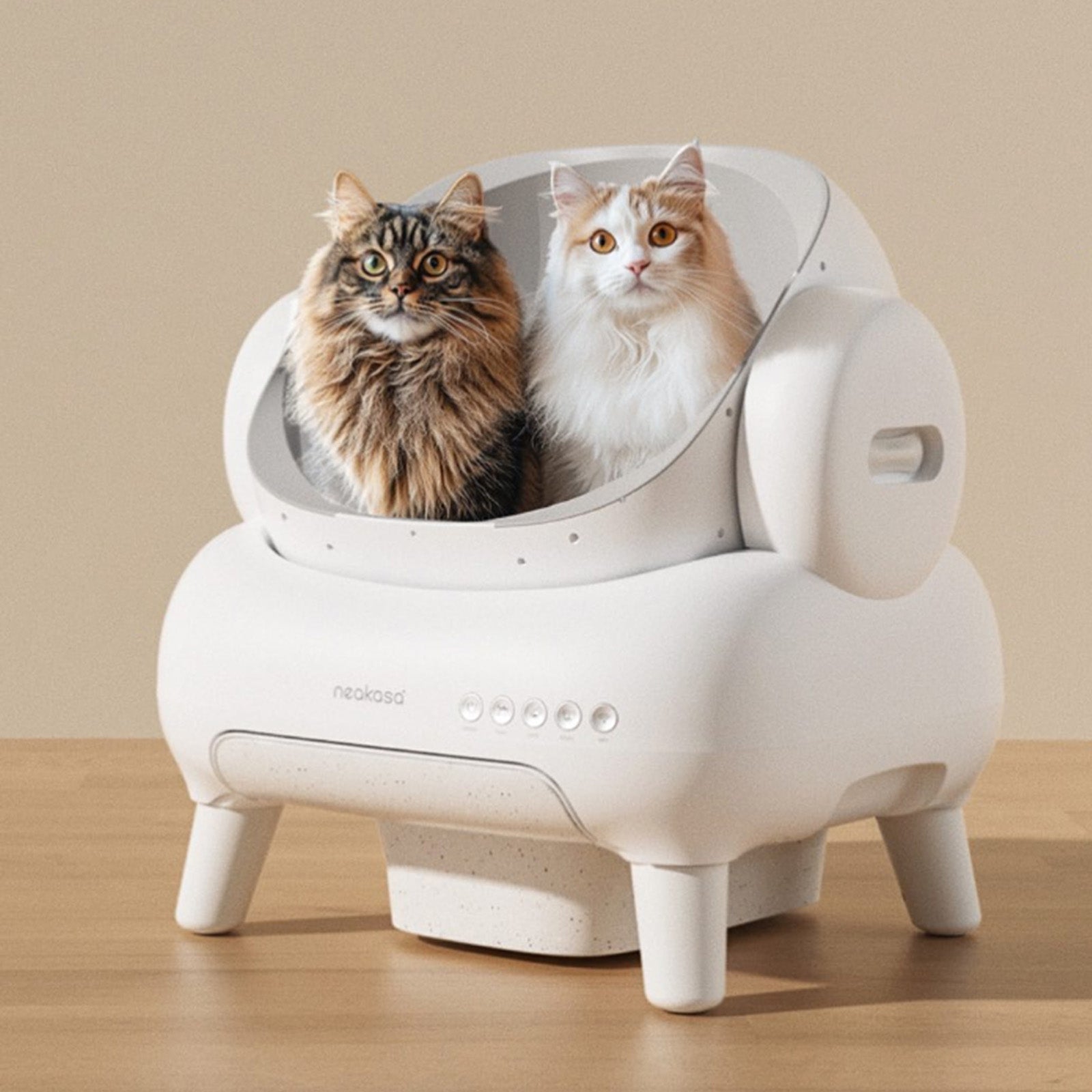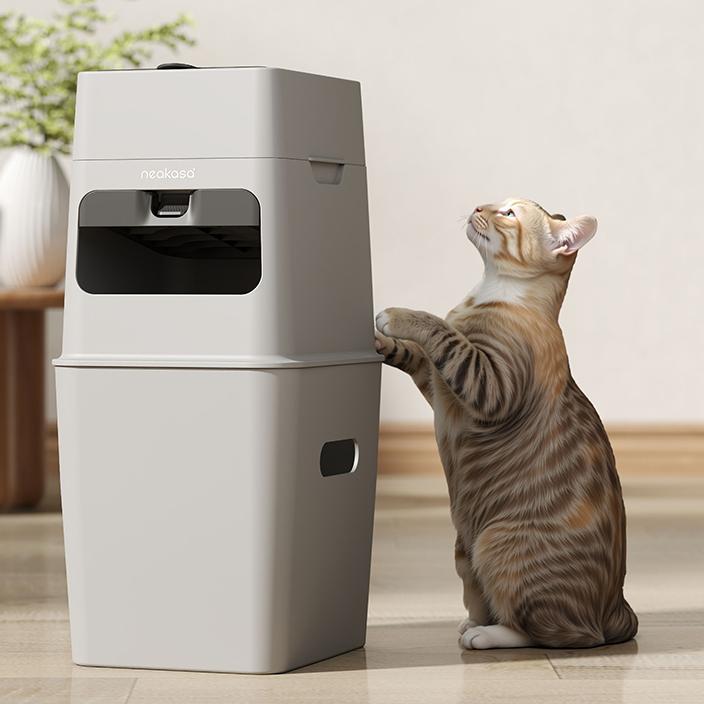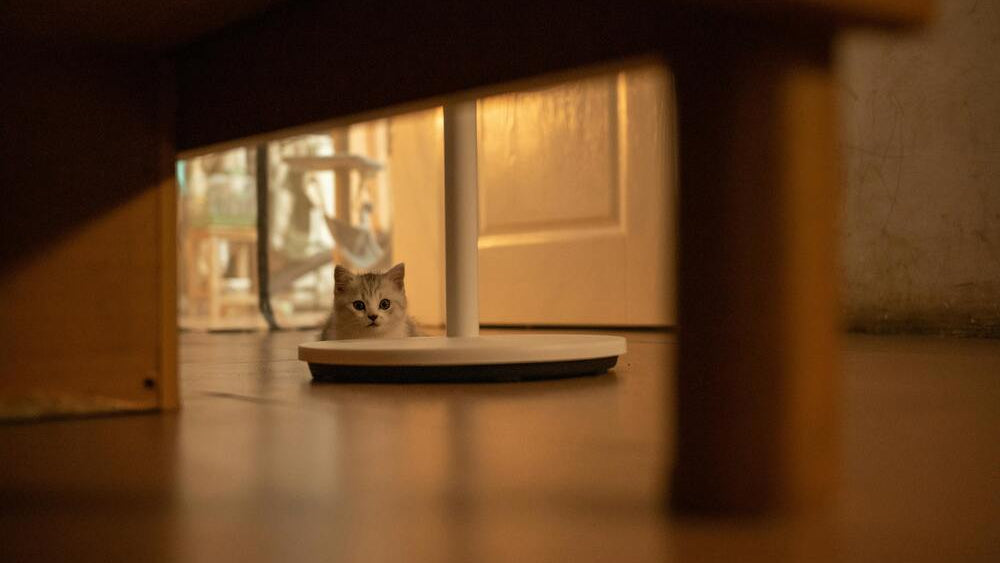Finding blood in your cat’s litter box is scary, especially when your cat seems totally normal. Often it’s caused by mild issues like diet changes, stress, or minor intestinal irritation.
But since cats hide discomfort so well, blood in the stool should never be ignored. Here’s a quick look at common causes and when to seek a vet.
Why Is My Cat Pooping Blood Even If It Seems Normal?
Understanding why this happens helps you judge whether it’s something you can monitor or a sign your cat needs medical care.
It’s Usually a “Localized” Issue
In most cases, blood in a cat’s stool comes from mild irritation in the lower intestines or around the anus, such as:
- Colitis (inflammation of the colon)
- Mild abrasion
- A small anal fissure
Because these issues occur near the very end of the digestive tract, they often don’t affect the cat’s overall system or vitality. However, even if the issue seems minor, it shouldn’t be ignored because visible blood is a clear signal from the body that something isn’t right.
Cats Are “Masters at Hiding Pain”
Cats naturally mask discomfort—it’s an evolutionary instinct that helps them survive in the wild. Even when suffering from:
- Intestinal inflammation
- Parasite burdens
- Mild infections
They may continue behaving normally, making it incredibly hard for owners to notice something is wrong until symptoms escalate. This is why any abnormality in the litter box must be taken seriously—it may be one of the rare ways your cat is willing to "tell you" they are hurting.
5 Common Reasons Cats Have Blood in Their Stool
Now that we understand why cats may seem fine despite the symptoms, let’s look at the specific causes. Here are the five most common reasons for bloody stool in otherwise healthy-acting cats.
| Cause | Common Triggers | Key Signs | Stool Appearance |
|---|---|---|---|
| Food Allergies | Sudden food switch or ingredient sensitivity. |
|
|
| Intestinal Parasites | Worms due to missed or irregular deworming. |
|
|
| Stress-Induced Colitis | Stress from moving, new pets, or routine changes. |
|
|
| Constipation | Hard stool from dehydration or low fiber. |
|
|
| Infections | Spoiled food, bacteria, plants, or chemicals. |
|
|
Since early changes in stool are often the only visible clue, using a clean and well-maintained litter box is crucial. A self-cleaning box like the Neakasa M1 ensures the litter remains fresh, so blood streaks or mucus are easier to spot without being buried under waste.

- Effortless self-cleaning that eliminates daily scooping
- Open-top design for better comfort and easy access
- Spacious interior that supports cats up to 33 lbs
- Ultra-quiet operation (~50 dB) for a calm home environment
- Smart app control with real-time usage and litter tracking
What It Means When Bloody Stool in Cats Smells Bad
Bloody stool is concerning on its own—but if it’s unusually foul-smelling, pay even closer attention. Different odors offer different clues.
1. Metallic Smell (Rust-like)
This often comes from fresh blood interacting with digestive fluids. It typically indicates newer bleeding from the colon or rectum. While not always severe, it requires close monitoring to ensure it resolves quickly.
2. Rotten Smell (Sharp and Putrid)
This is much more concerning, especially if the stool is dark red, mushy, or tar-like. It may indicate:
- Upper gastrointestinal bleeding (digested blood)
- Infectious colitis (bacteria or virus)
- Toxin exposure
- Severe parasite infection
Rule of thumb: If the smell is significantly worse than their "usual" bathroom odor, do not wait—get veterinary help promptly.
Safe Home Care for Bloody Stool (What You Can and Shouldn’t Do)
If the bleeding is very mild (just a speck or streak) and your cat is acting 100% normal, you can try simple home care for 24-48 hours. However, proceed with caution.
1. Bland Diet Strategy (Chicken & Rice)

Feed a light, easily digestible diet to let the gut "rest":
- Unsalted, boiled chicken breast (shredded)
- Plain white rice or plain pumpkin purée (ensure it is not pie filling with spices)
If your cat doesn’t tolerate rice, chicken alone, or a vet-recommended gastrointestinal prescription diet is the safest bet.
2. Keep Your Cat Hydrated

Mild inflammation or constipation can lead to dehydration, which makes the problem worse. Adequate hydration helps the gut mucosa recover:
- Provide fresh, clean water sources (consider a water fountain).
- Add warm water to their wet food.
- Use pet-safe bone broth (onion/garlic-free) to encourage drinking.
3. When to Stop Home Care Immediately (Red Flags)
Stop home care and seek veterinary care immediately if:
- The amount of blood increases.
- Bloody stool persists for more than 48 hours.
- Your cat becomes lethargic, starts vomiting, or refuses to eat.
- You see black, tar-like stool (melena).
- The cat is a kitten (under 6 months) or a senior—they are at higher risk.
FAQs About Blood in Cat Poop
Q1. Can dry food cause blood in cat stool?
A1. Yes. Dry food is low in moisture and some cats may get constipated, causing small anal tears. Sudden changes to a new dry food may also irritate the gut and cause blood streaks.
Q2. How long is bloody stool considered an emergency?
A2. If it lasts more than 48 hours, see a vet. If the cat shows lethargy, dehydration, severe diarrhea, or black stool, it’s an emergency at any time.
Q3. Can deworming cause bloody stool?
A3. Occasionally. If parasites had already damaged the intestines, killing them may temporarily cause mild blood in the stool. But if it lasts more than 1–2 bowel movements, seek veterinary advice.
Final Conclusion
Even if your cat seems normal, blood in the stool should never be ignored. Mild irritation is common, but parasites or infections are also possible.
Try brief, bland meals and hydration if your cat is otherwise well, but if symptoms persist or worsen, get veterinary help promptly. Early action is the safest way to protect your cat’s health.









Leave a comment
This site is protected by hCaptcha and the hCaptcha Privacy Policy and Terms of Service apply.